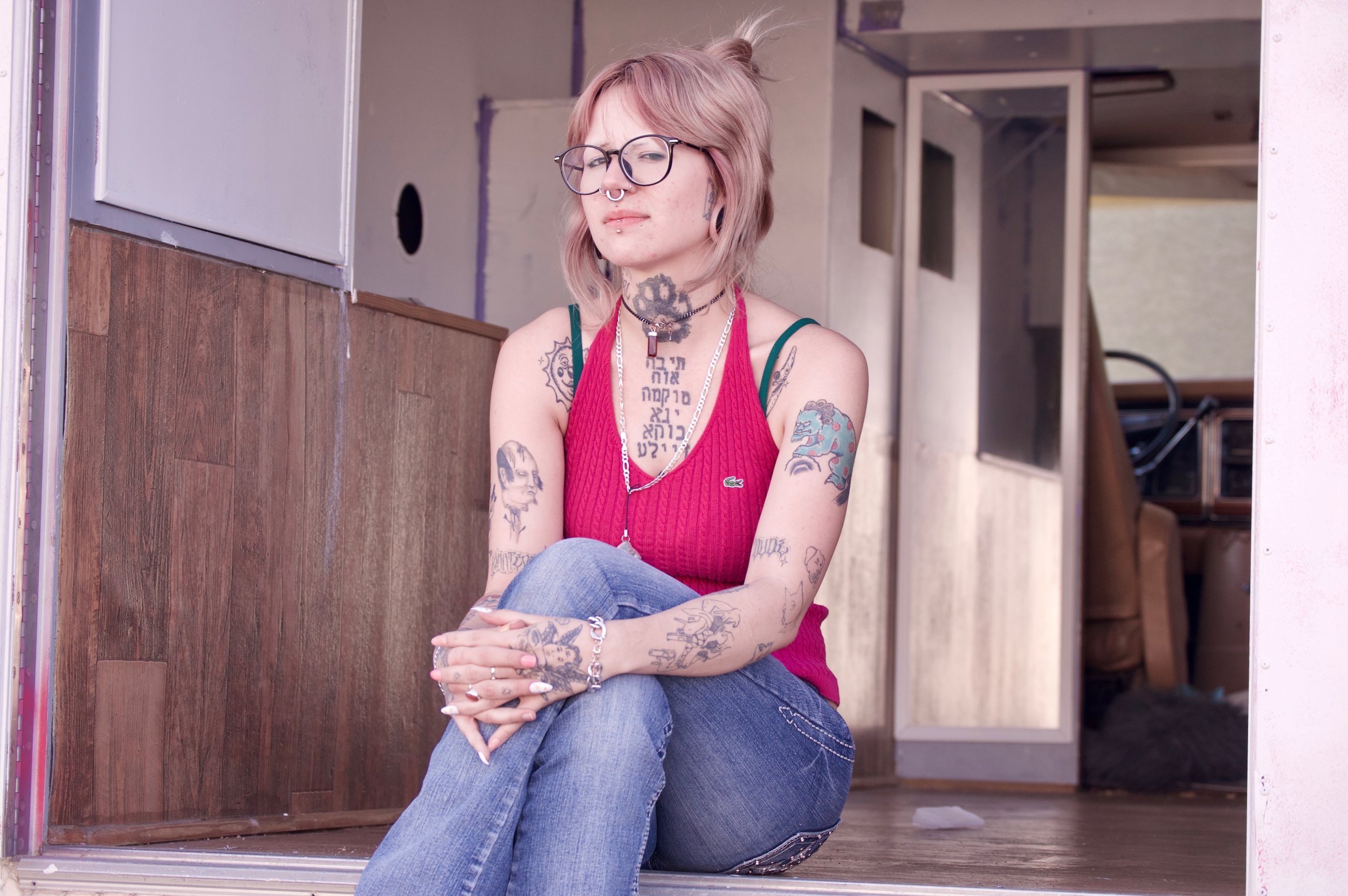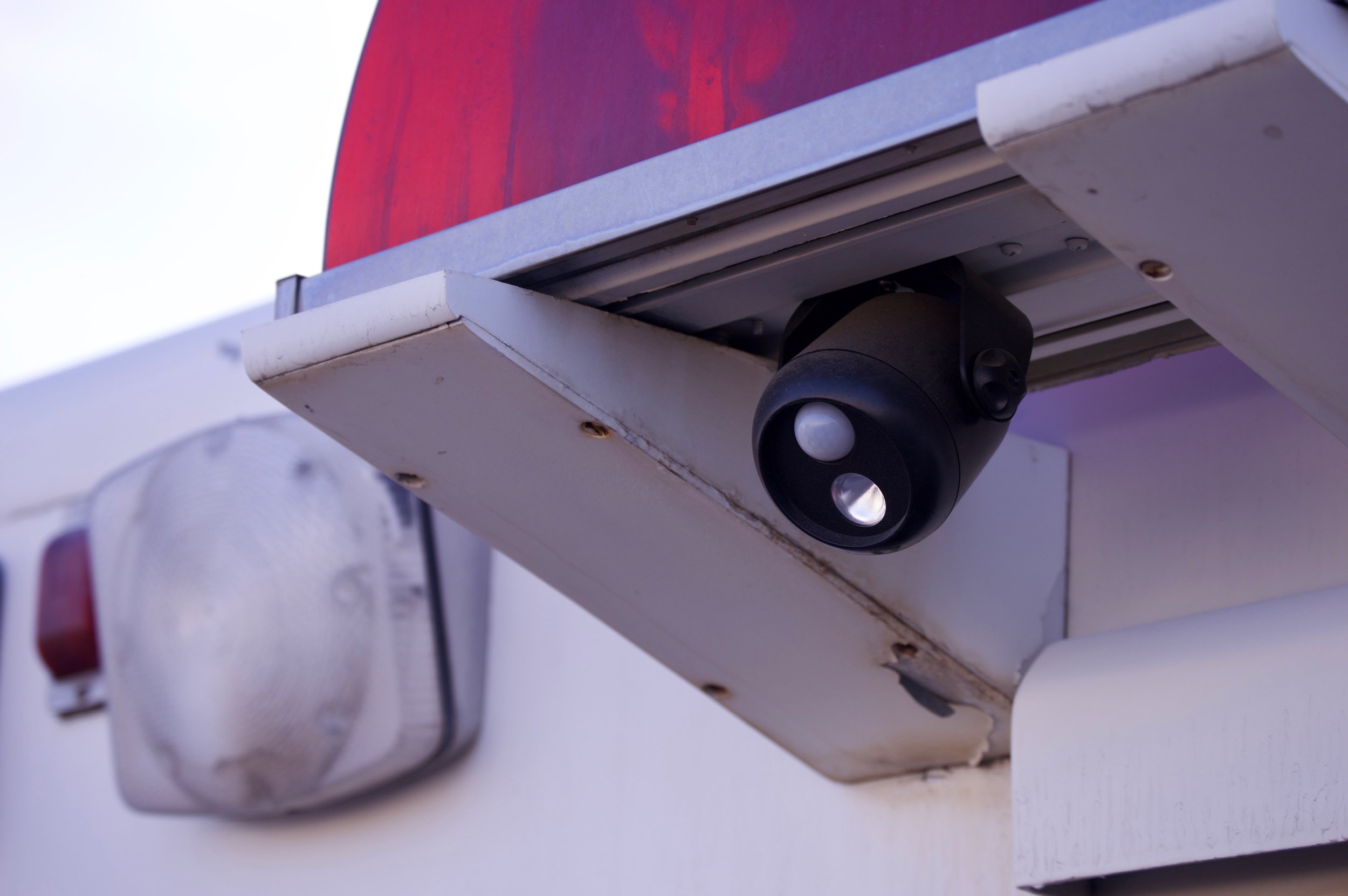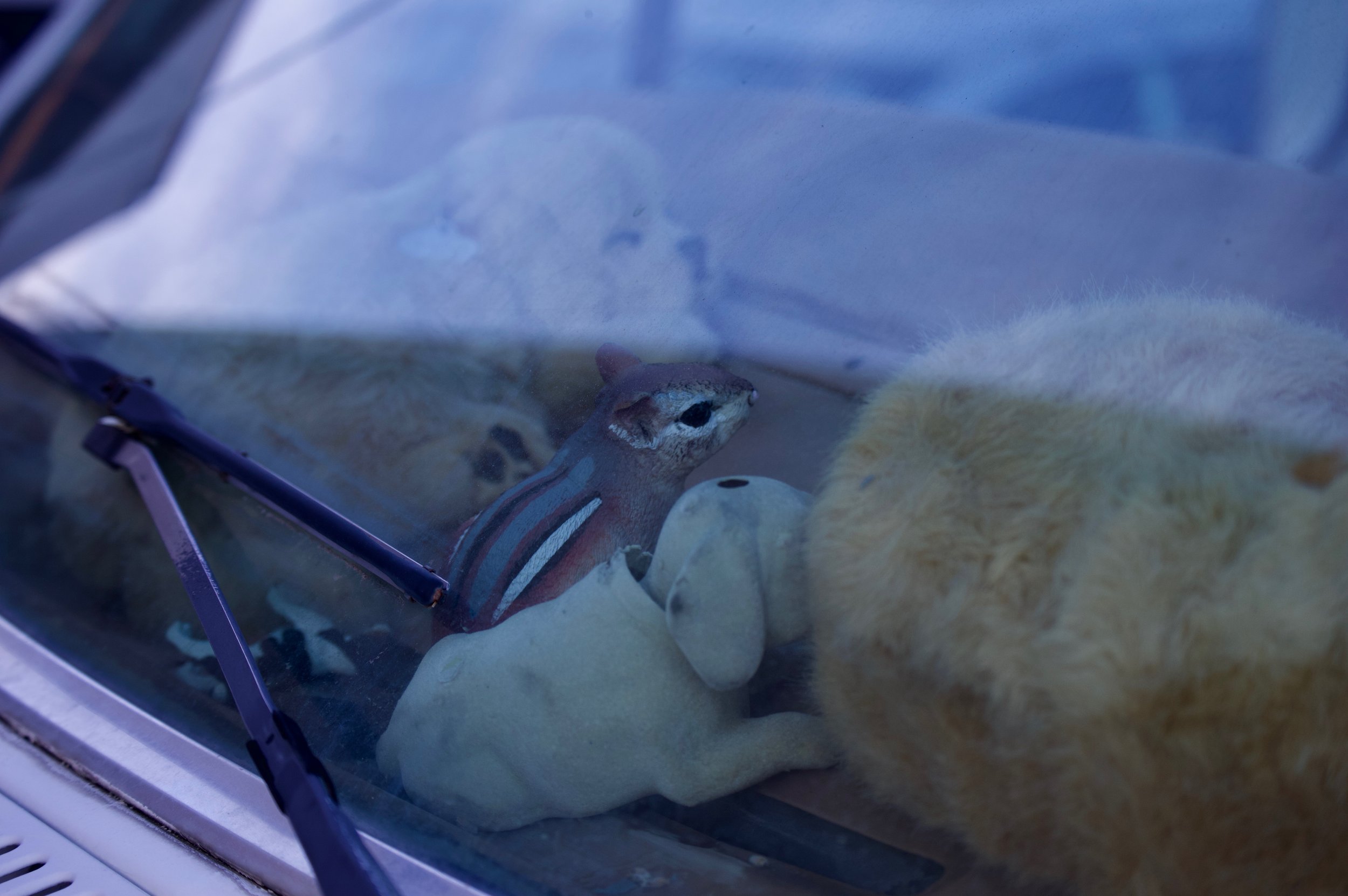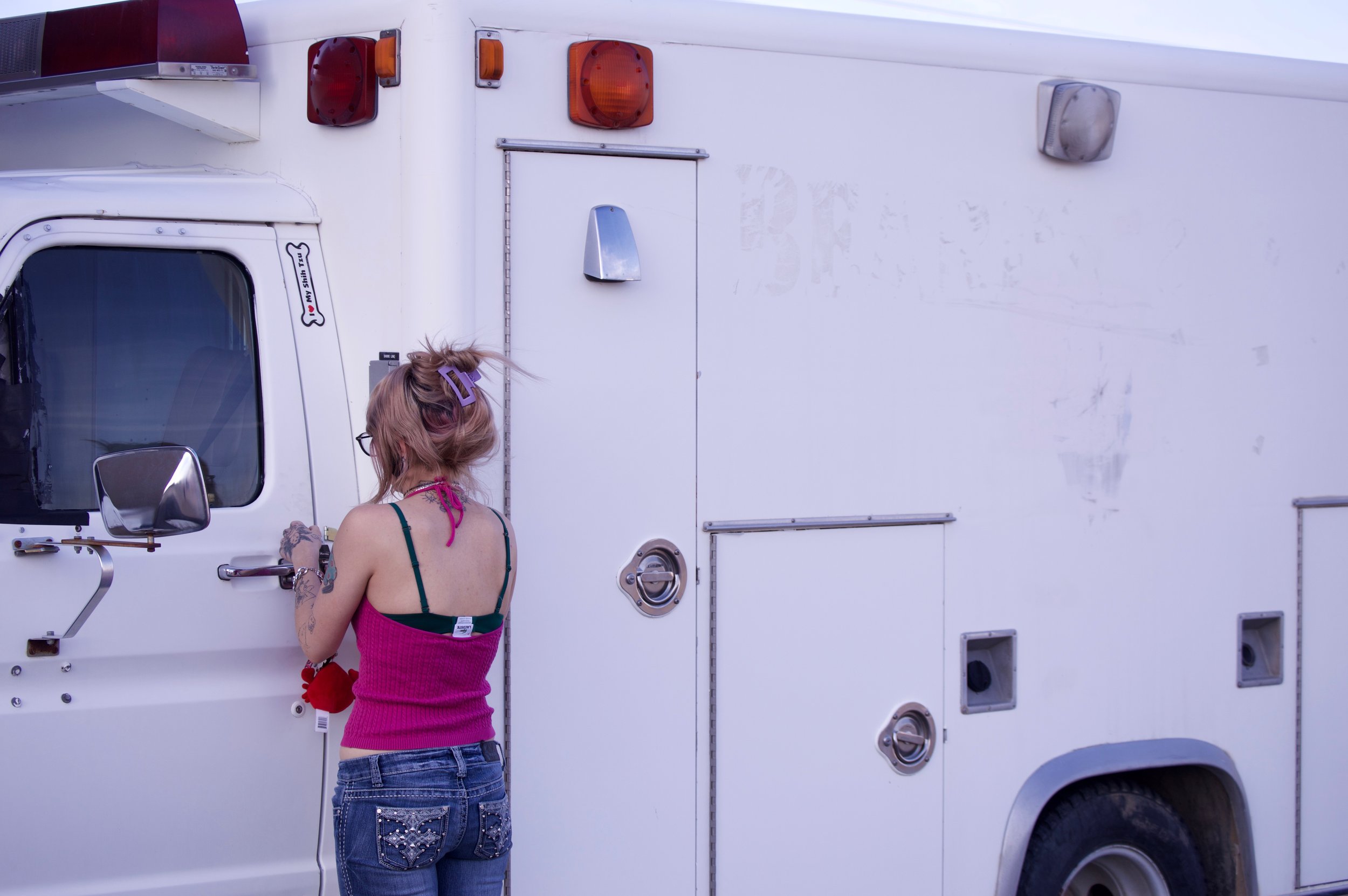Racheo Blais is a 25-year-old who has lived in Northern Nevada all her life. For a portion of that time, her home was a 1985 hollowed-out ambulance which carried her through the very beginning of the COVID-19 pandemic.
Prior to purchasing the ambulance, she was living in her car, a Geo Metro, after her housing situation completely fell apart. She cashed her checks when she got them and saved all she could in order to afford the dilapidated ambulance, which at the time, she thought was a steal.
At first, the idea of having an autonomous housing unit that could travel seemed like an optimal decision considering the difficulty of renting with a single income in Reno.
She bought it in February 2020 and lived in it until she was able to find stable housing in January 2021. She describes those eleven months as incredibly despondent, filled with anxiety and paranoia stemming from a break-in and theft, food insecurity, difficulties with everyday life as well as an incredibly isolating time.
Racheo’s ambulance was broken into almost five months after she moved into it. The intruder made off with the title to the ambulance, her keys, her medications, her prescription glasses and left her with a shaken constitution, scared and paranoid.
“[I] didn’t really feel unsafe in the van until that happened, because I felt it was really inconspicuous, nobody’s really breaking into an old decrepit ambulance in some parking lot in the middle of town. When you went into the ambulance you could tell a single woman lived there, all of my stuff was super girly, flowers plushies everywhere, I didn’t really own anything of value so I wasn’t worried about it in the first place,” she said.
With the situation leaving her rattled, she purchased a gun which she said ultimately was not a great idea, installed outside locks on the doors because it was too expensive to change the door-locks, put up warning signs on the windows as well as fitted them with razorblades to deter people from getting in if there was another attempt to break-in.
Knowing she didn’t want to continue living in the ambulance, she repeatedly tried to find more stable housing. She applied to various apartments around town which cost her close to a thousand dollars collectively over a period of months, just on the application fees. She didn’t hear back from any of the leasing offices.
“The break in made me realized I wanted to leave, then looking for an apartment made me realize I couldn’t. That’s kind of when I wanted to make it more livable in the van to what I could do living there,” she said.
Blais would wake up, use the five-gallon plastic bottle with a spigot she had as a sink to wash her face and brush her teeth, tend to her cat and then went off to work for the day. She would come back after getting off work and return to what she called an incredibly isolating environment.
"I think people need to be more aware of the blessings they have, and I think the city needs to realize even having a place to do laundry, to shower, to use the restroom, providing electricity, are things that save people’s lives. It’s basic human needs, it's a human right to have those things.”
Once she got back from work, her night would include her sometimes making meals on her bed with an electric stove she had; however most days she didn’t have the energy to do so and as she put it would have “either an uncrustable or sleep for dinner”.
“I never slept well either, every single bump in the night would have me on guard, there were times when people would knock on my van at night, the fire department came one time because the alarm of the building that I was parked in front of went off during the night so they were harassing me about why I was in a van, someone broke into the dumpster of that building, plus I was in there with my cat so if she was freaking out I never really slept well,” she said.
Without her keys, she never felt safe being away from the ambulance for too long. The time she spent away from it was while at work and the one day a week she would leave for a few hours to go shower.
“My dream while I was living in the van was just to have a safe parking lot, that was illuminated where I could get power, use the restroom and that’s pretty much it. Where it was just a safe place to be where I wouldn’t have to be so scared,” she said.
At one point, she and a friend of hers who was also living out of her vehicle were staying in the parking lot next to what used to be Fort Ryland. For a few weeks it was just the two of them but as time went on more and more people in vans, trucks and RVs started living there. However, due to the amount of times they were ticketed, they were forced to move elsewhere.
“I was less scared having other people living in their vehicles around me because I’m not just one single woman in a van living in a random parking lot. I was a single woman in a van in a parking lot with multiple people living around me, and it made it feel more like a community,” she said.
All along the west coast, the issue of disappearing affordable and low-income housing has made the issue of houselessness and housing instability flare. With higher rates to secure housing and low wages, people who are experiencing an unstable housing situation find their only option is to sleep in their vehicle, if they even have one.
A bandaid to the situation is to offer designated parking spaces where people can go who are living in their vehicles. Santa Barbara was the first city on the west coast to offer this type of help, having started their program in 2004 with the direction of a counseling center called New Beginnings.
The way it works is by offering those who are living in their vehicles space to park overnight with guaranteed safety. The lot locations aren’t publicized as to not invite those who would discriminate or try to take advantage of the people sleeping there. While it is not a stable housing unit, the program allows some respite from people trying to break into the vehicles as well as from tickets from the police.
The Santa Barbara program is a blueprint for the initiative and other major cities like Eugene, East Palo Alto and Los Angeles have already started their own parking lot programs.
It wouldn’t be so difficult to have the same kind of program here in Reno, where empty plots of land are all too easy to find.
“It’s funny because a lot of these areas that are empty lots now are where people used to have affordable housing, so instead of living in a van and being scared for my life every night, I could have lived in a hotel room and been more comfortable and had access to these basic human rights that I didn’t have for so long because I lived in a vehicle,” Blais said.
Living in the ambulance was difficult for Racheo, but she was always reassured that her situation, even with the difficulties she faced, was and is a privileged one.
“You know, holy shit I think I felt unsafe in a van, how do you think people in a tent or no tent feel?… If I were on the street, I couldn’t have a wardrobe or multiple pairs of shoes or things like that, it made me grateful for those things that I had and that they were safe.”
It’s lead her to being grateful for the things in life that she didn’t have access to while she was living in a vehicle. She said it's important to have an understanding of gratitude towards things like hot running water, the ability to do laundry, the opportunity to practice good hygiene, even the ability to store food items in a fridge.
“We have all of this land, all this empty land that we might as well use before it becomes luxury apartments that no one here can afford; because a lot of people are moving because they can’t live here, we’re all one check away from being homeless,” she concluded.





